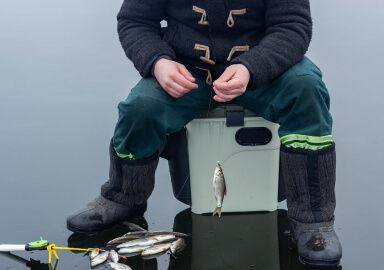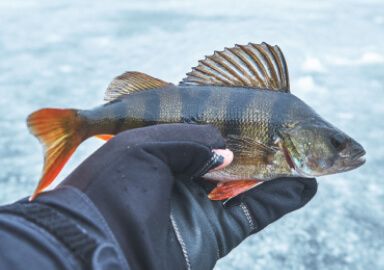Yellow Perch
Yellow perch are a fun-to-catch and delicious-to-eat little panfish native to lakes in the northern United States and southern Canada.
View 13 listings
13
listings
–
price starting from
4
countries
–
to the nearest trip
Where and When?
Yellow perch are native to North America, primarily from the Great Lakes region into the northeastern and upper Midwestern United States and throughout Nova Scotia, but with scattered populations in the southeast as well. Because of its popularity as a sport fish, the yellow perch has been widely introduced to many lakes and ponds in the western United States and other regions of the country.
Yellow perch are most active during the day and are rarely caught at night. Winter and spring are great times to target yellow perch, since they can be easily caught through the ice, and they move into shallow water during the spring to spawn.
About Yellow Perch
Yellow perch are a very popular as a sport fish, prized by anglers for their delicious flavor and for putting up a sporting fight on light tackle. These fish have elongated bodies (not rounded like many sunfish), and have distinctive coloration, with yellowish gold to pale yellow sides set off by dark vertical bars. A typical yellow perch is 6 to 10 inches long, but they can grow to 12 inches and even larger.
The biggest perch are usually found in deeper water. Because yellow perch generally congregate in schools with similar-size fish, you can often catch a mess of perch that are more or less the same size. They are primarily found in lakes, but they sometimes occur in slow-moving streams and rivers. Perch like cool lakes with rocky bottoms, some vegetation, and deep water.
How to Catch?
Yellow perch eat a variety of food, including minnows, as well as worms and other invertebrates. Light or ultralight spinning tackle is usually the ticket; once you locate a school, perch are fairly easy to catch and they put up a great fight. Live bait underneath a small bobber is the go-to method, with baits including worms, crickets, small leeches, and especially minnows always good choices for yellow perch. Small jigs that imitate minnows or crayfish work well. Perch also hit small jigging spoons when the schools are in deep water in the fall.
Fly anglers catch them on fly tackle with streamers and wet flies when they move into the shallows in the spring. Yellow perch are a mainstay for ice fishing since they remain in large schools during the winter and are relatively easy to locate. Ice anglers often catch good numbers of yellow perch by fishing minnows or small larvae slightly above them or in their midst. Yellow perch may not be the biggest fish ever, but it’s a lot of fun, especially for beginners, as it’s usually easy to catch a whole mess of them to fry up for dinner!













